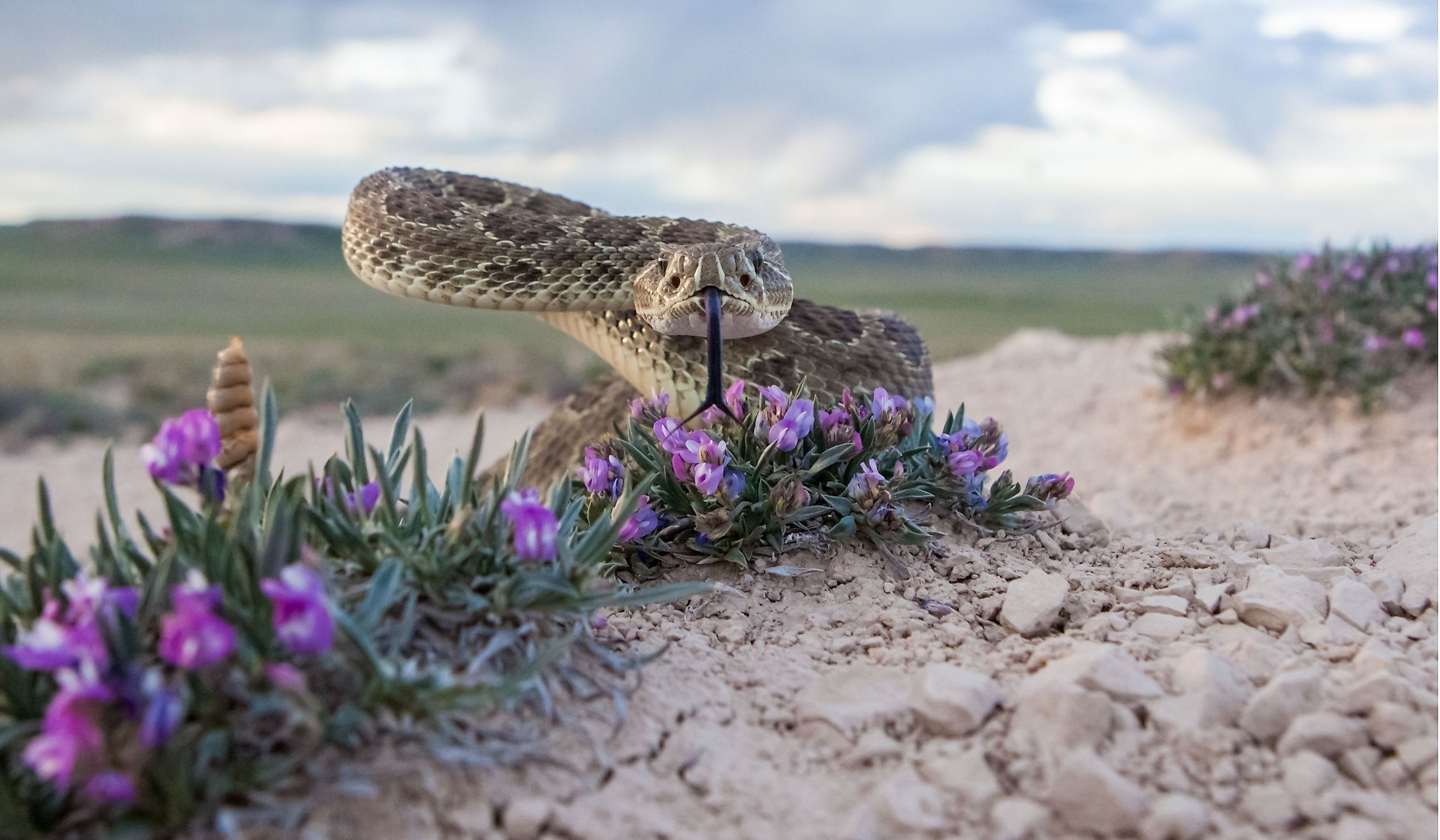
The 11 Deadliest Animals in Idaho
Idaho is a moderate-sized state that shares boundaries with British Columbia, Montana, Wyoming, Utah, Nevada, Oregon, and Washington. The state also shares Yellowstone National Park along the border of Wyoming. Idaho's geography and environment change with the elevation of the land rising toward the south of the state with the Rocky Mountains. Depending on which part of the state you find yourself in, the dangerous animals that you may encounter may vary. Further into the wooded cover of the Rockies, your chances of an encounter with a Grizzly increase just as being on the plains increases your chances of an encounter with a Bison. Regardless of where you are in the state, it is important to understand the risks of encountering a deadly animal, how to prevent harm, and when to seek medical attention.
Grizzly Bears
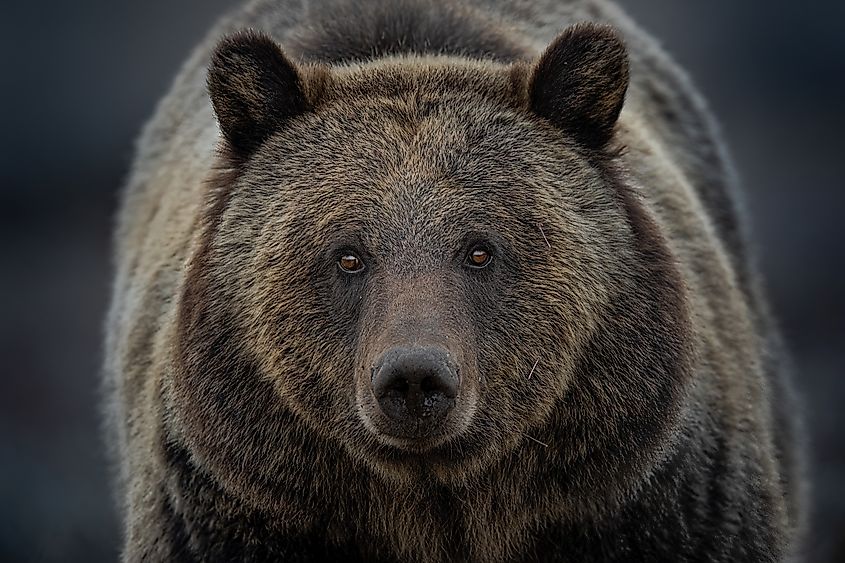
A beloved American mammal, despite their cuddly appearance, grizzly bears are one of the deadliest animals in Idaho due to their aggressive nature. They are mostly found in the northern and eastern sides of Idaho. This bear species eats up to 40,000 moths per day but consumes a diverse diet. In order to search for food, they have a heightened sense of smell combined with exceptional eyesight. You can identify a grizzly by their brown coat and large size, weighing up to 400 - 600 lbs at maturity. When standing on their hind feet, grizzlies can reach between six and seven feet in height. In the spring months, when mama bears are raising their cubs, be sure to stay away from any grizzlies you may see, especially young ones, to avoid a dangerous altercation. Also, be sure to follow proper food storage and scent-reduction techniques while out on the trail.
Great Basin Rattlesnake
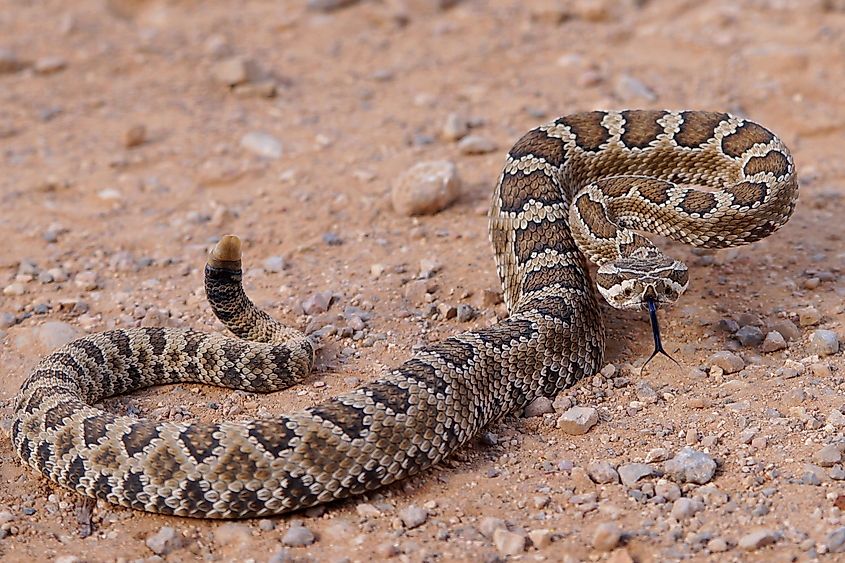
The Great Basin rattlesnake is a large species of rattlesnake that can reach up to 48 inches in length. This snake is mostly found in the southernmost tip of Idaho and is recognizable by its blotchy banded tail just before its rattle. They can be found in flatlands, bushy areas, grasslands, and in the Rockies. Although they typically only eat small rodents and lizards, when startled, this species of rattlesnake does pose a risk to humans as they may strike when threatened. If bitten by a rattlesnake, be sure to seek medical attention in order to receive an appropriate antivenom.
Northern Pacific Rattlesnake
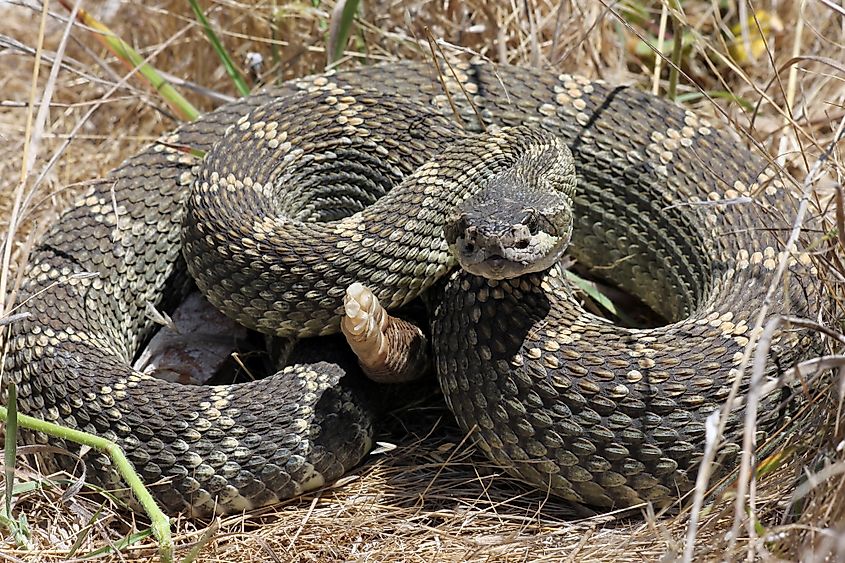
The northern pacific rattlesnake can live to be between 15 and 24 years old, also regularly known as the Western Rattlesnake. These snakes are slightly smaller than the Great Basin rattlesnake and are the only ones in the region that are not of the diamondback variety of rattlesnake. Like most snakes, this species is crepuscular, meaning that they are most active during dawn and dusk. Although it is unlikely that an encounter with a northern pacific rattlesnake will end with you getting bitten, a bite does require swift medical attention.
Prairie Rattlesnake
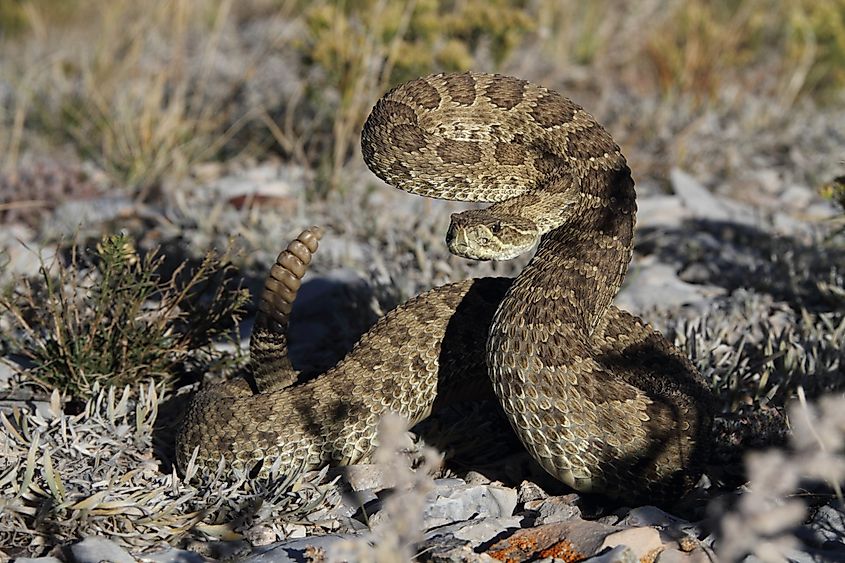
Prairie rattlesnakes are the third species of rattlesnake in Idaho to be aware of. They are mostly found in the central-eastern portion of the state and are identifiable by their triangular head and blunt nose. These snakes can range in length between 15 and 60 inches at maturity. They are covered in pale green to brown blotches ringed with a lighter line. They are mostly found in rocky and brushy terrain, though they are readily found on the shores of lakes and rivers. Like with the other two rattlesnakes native to Idaho, a bite is unlikely but a medical emergency that requires attention.
Bison
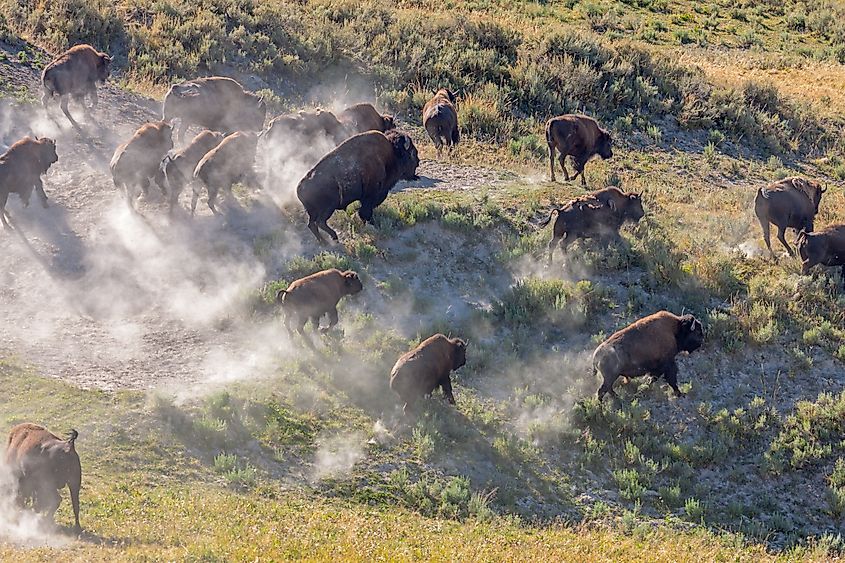
Bison are a large, migratory species native to North American plains. The males can weigh up to 1,600 lbs and stand at around 6 feet in height. They are the largest land mammal in the continent and are identifiable by their thick dark hair, short curved horns, and shoulder hump. This species feeds on grass and other low-growing plants and can live up to 20 years of age. What makes bison dangerous is when a group of bison enters into a stampede, a whole group running quickly together, knocking through smaller obstacles in their way. If caught in a stampede, even if in a car, you face the risk of being trampled, which can cause death.
Gopher Snake
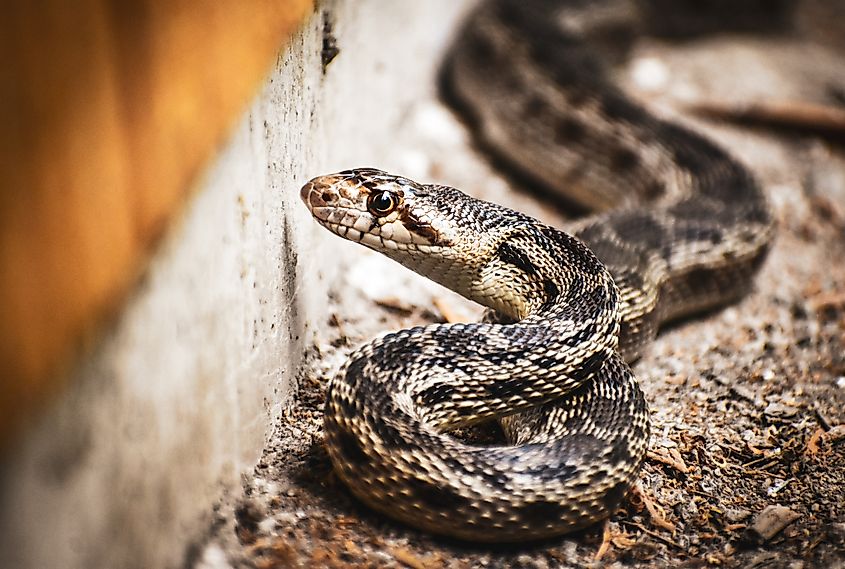
Gopher snakes are the most common snake in Idaho, living across most of the state's terrain. They are identifiable by their light-colored scales with brown and black blotches that may present in a checkered pattern. They can be as long as 67 inches in length, though some gopher snakes have been measured as long as over 100 inches in length. They are most active at night during the warmer months, between April and October. Although they are not a species of rattlesnake, they do have a similar rattle that may sound like a rattlesnake when it hits debris like leaves or pebbles. These snakes are constrictors that have the possibility to constrict a weakened or unconscious human.
Black Widow Spider
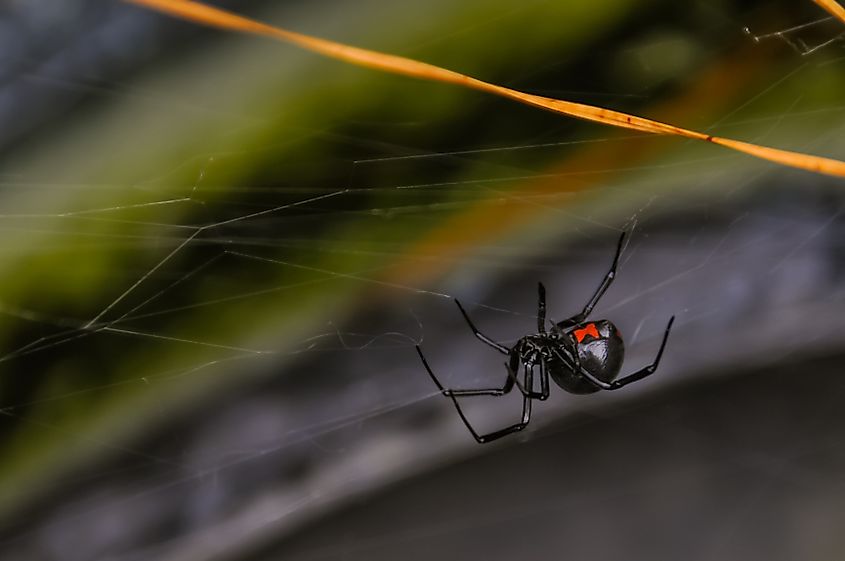
Black widow spiders are one of two venomous species of spider in Idaho. They are a very famous species, known for having large females with a black body and red, hourglass-shaped markings on their bodies and smaller brown males. If bitten by a black widow, you likely won't notice the site until 1-3 hours post-exposure, once the numbing agent wears off from their fangs, but you will likely notice symptoms such as fever, sweating, and nausea instantly as the venom spreads through your body. If bitten by a black widow or something you suspect could be one, seek urgent medical attention to receive an appropriate antivenom.
Brown Recluse Spider
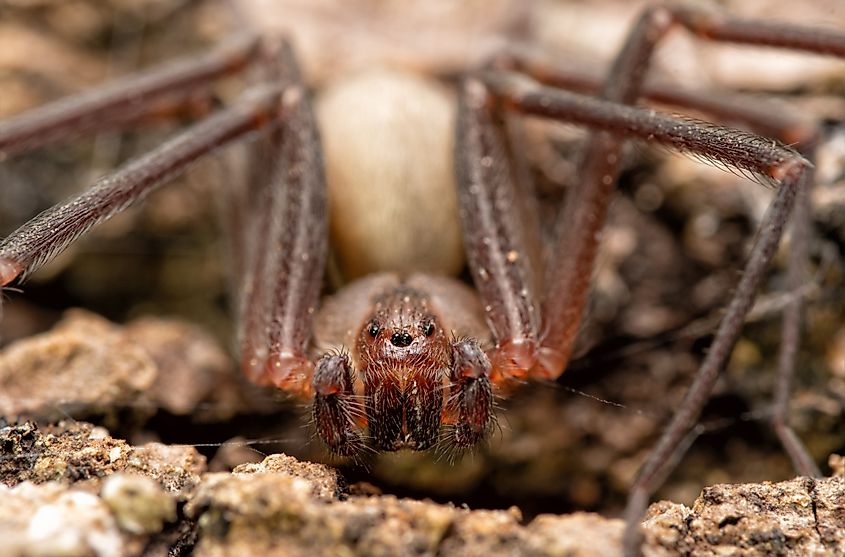
Although brown recluse spiders are not native to Idaho, they have migrated north to the southern portions of the state in recent years. When bitten by a brown recluse, you will likely feel pain immediately or relatively quickly. Their bites are characterized by a sore that spreads quickly, often causing necrosis. They are small and brown, identifiable by their violin-shaped marking on their upper back. Like with the black widow spider, if you suspect you've been bitten by a brown recluse, seek immediate medical attention to prevent the spread and onset of necrosis.
Yellow Jacket Wasps
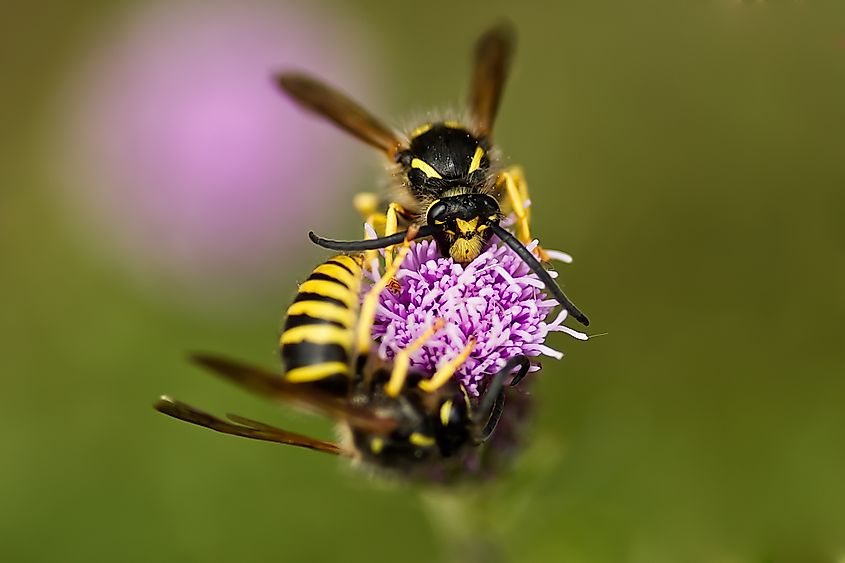
Yellow Jacket Wasps are the most common species of wasp in Idaho. They are dangerous both due to their stings inducing allergic reactions in a wide range of people but also because they are fairly aggressive. You are likely to find yellow jackets burrowing under logs or breaks in sidewalks. If you are eating outdoors, particularly meats and sweet treats, this species of wasp may descend and try to take some of your food. If stung by a yellow jacket and you start experiencing symptoms of an allergic reaction, be sure to seek immediate medical attention.
Paper Wasps

Paper wasps are a species that appear similar to yellow jackets, although they are more elongated. A distinctive feature of paper wasps is that they let their legs hang low even while in flight. Although they are not as aggressive as yellow jackets, they tend to build their nests near humans and will attack when disturbed. Like with the yellow jackets, these wasps are most dangerous to those with an allergy or when repeatedly stung by the same or a swarm of wasps. If stung by a paper wasp and experiencing any symptoms of an allergic reaction, seek medical care.
Mosquito
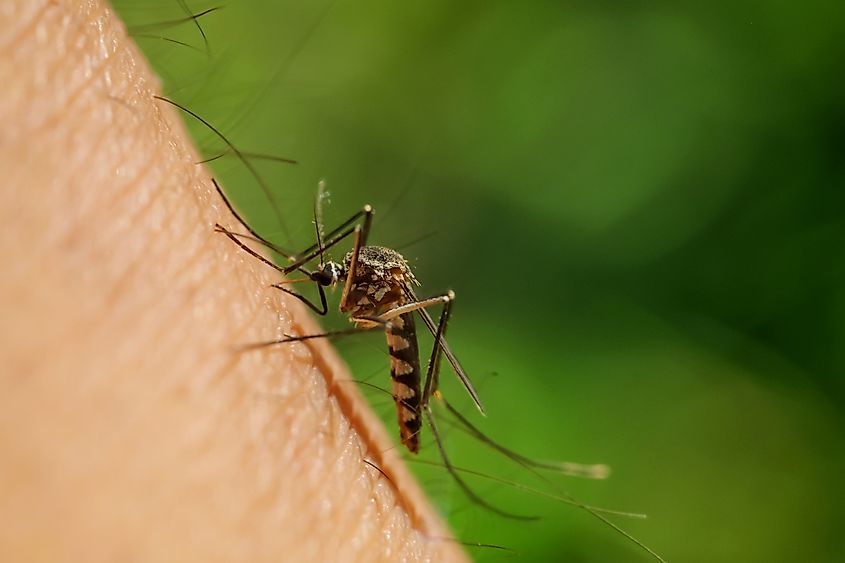
Like most of the rest of the world, mosquitos can carry infectious diseases in Idaho and are worth avoiding through preventative measures such as using Off or Deet or covering yourself in mosquito-repelling fabrics or nets. The highest risk for infection from a mosquito in Idaho is the West Nile Virus. Although most healthy people will see a full recovery from this virus, it does have the possibility to lead to serious illness and even death. Those over 50, those who have underlying medical conditions, or those with a weakened immune system are most at risk of serious illness.
Out of all of the regions of the United States, Idaho is a fairly safe place to be when it comes to encountering deadly animals. That said, Idaho's expansive and rolling wilderness means that encounters with dangerous wild animals are possible. When visiting the state, especially in remote regions, be aware of what animals you may encounter and how to prevent any serious injury or disease. Your highest risk of illness is from the smaller animals on this list, like the brown recluse, which can be unsuspecting and hard to spot but deadly.











